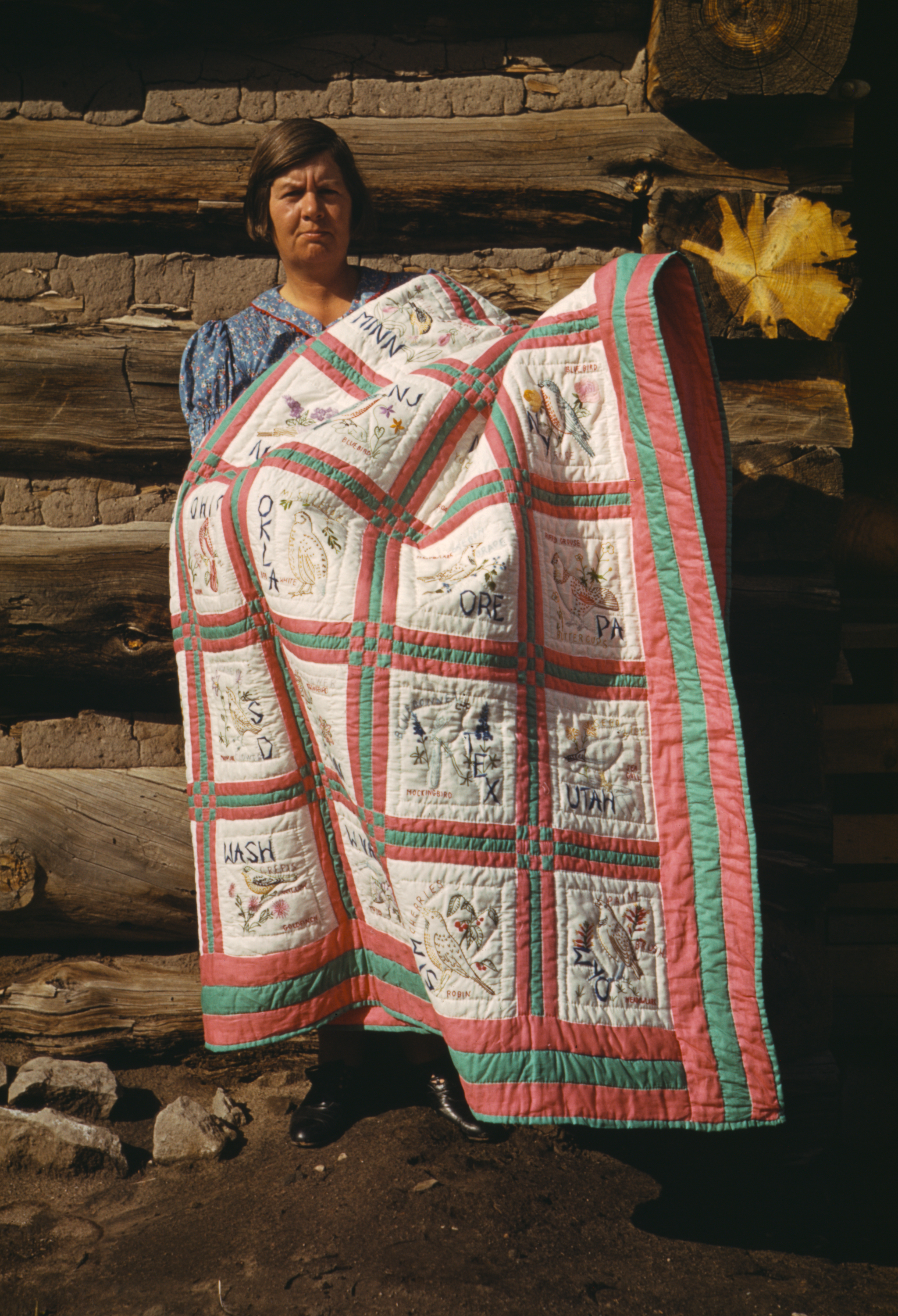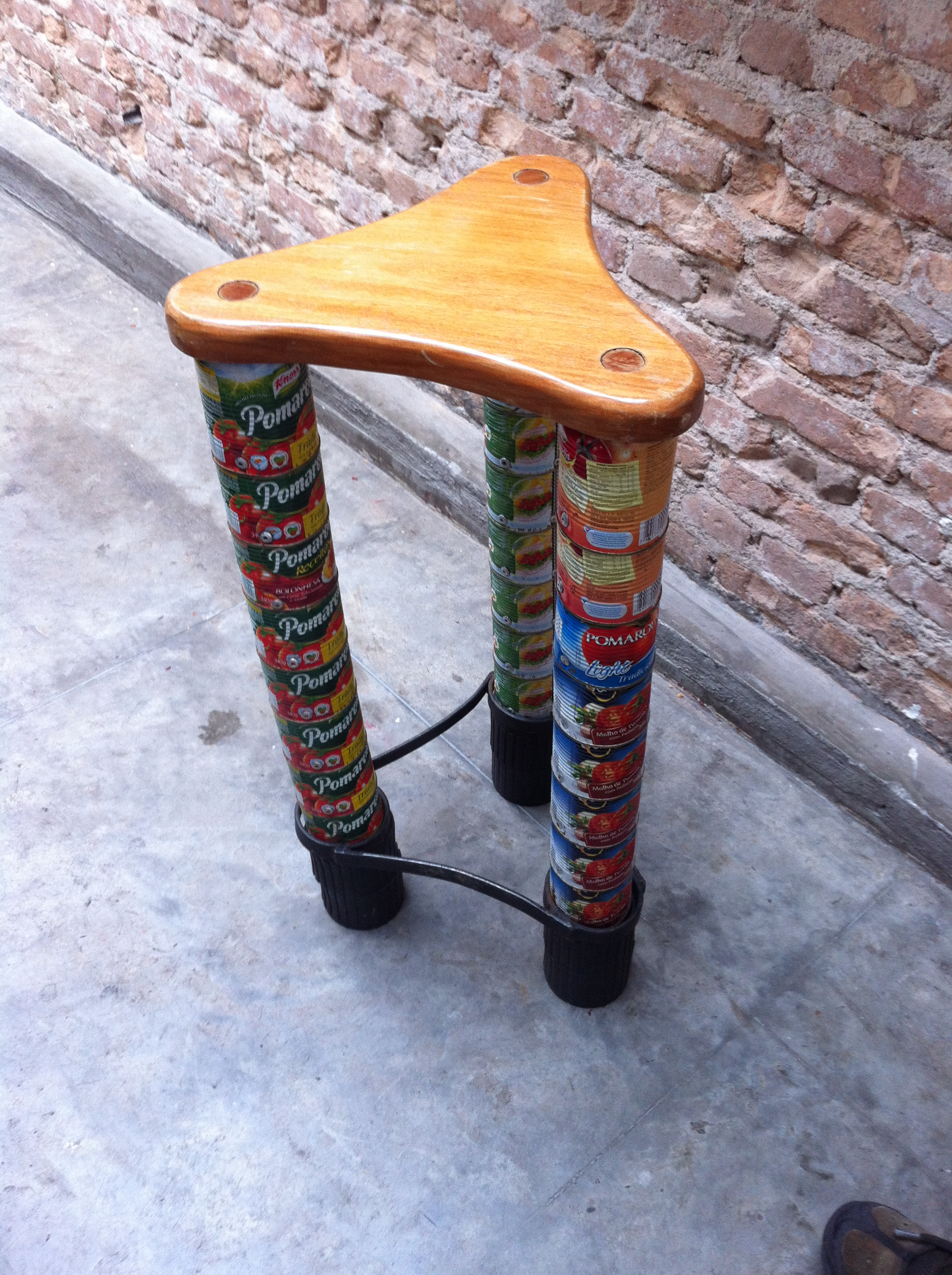|
Quilter
Quilting is the process of joining a minimum of three layers of textile, fabric together either through stitching manually using a Sewing needle, needle and yarn, thread, or mechanically with a sewing machine or specialised longarm quilting system. An array of stitches is passed through all layers of the fabric to create a three-dimensional padded surface. The three layers are typically referred to as the top fabric or quilt top, Batting (material), batting or insulating material, and the backing. Quilting varies from a purely functional fabric joinery technique to highly elaborate, decorative three dimensional surface treatments. A wide variety of textile products are traditionally associated with quilting, including bed coverings, home furnishings, garments and costumes, wall hangings, Quilt art, artistic objects, and cultural artifacts. A quilter can employ a wide range of effects that contribute to the quality and utility of the final quilted material. To create these ef ... [...More Info...] [...Related Items...] OR: [Wikipedia] [Google] [Baidu] |
Longarm Quilting
Longarm quilting is the process by which a longarm sewing machine is used to sew together a quilt top, quilt batting and quilt backing into a finished quilt. A complete longarming system typically consists of a sewing machine head, a frame, a table with a layer of plastic (under which is placed a pantograph), and several rollers on which the fabric layers and batting are attached. The longarm sewing machine frame typically ranges in length from , and the head is industrial length, . Quilting using a longarm machine can take significantly less time than quilting by hand or more traditional machine quilting methods. This time saving is a large factor in the gain in popularity of longarm quilting.Knight, Lois. ''Longarm Quilting? What Is That?.'' Resources for Long Arm Quilters. 19 July 2007. 18 March 200/ref> History The advent of the sewing machine led to an idea known as a “quilting machine,” which made its debut in 1871. The first quilting frame and machine consisted only of ... [...More Info...] [...Related Items...] OR: [Wikipedia] [Google] [Baidu] |
Quilt
A quilt is a multi-layered textile, traditionally composed of two or more layers of fabric or fiber. Commonly three layers are used with a filler material. These layers traditionally include a woven cloth top, a layer of padding, batting or wadding, and a woven back combined using the techniques of quilting. This is the process of sewing on the face of the fabric, and not just the edges, to combine the three layers together to reinforce the material. Stitching patterns can be a decorative element. A single piece of fabric can be used for the top of a quilt (a "whole-cloth quilt"), but in many cases the top is created from smaller fabric pieces joined, or patchwork. The pattern and color of these pieces creates the design. Quilts may contain valuable historical information about their creators, "visualizing particular segments of history in tangible, textured ways". In the twenty-first century, quilts are frequently displayed as non-utilitarian works of art but historically qui ... [...More Info...] [...Related Items...] OR: [Wikipedia] [Google] [Baidu] |
Quilt Art
Quilt art, sometimes known as art quilting, mixed media art quilts or fiber art quilts, is an art form that uses both modern and traditional quilting techniques to create art objects. Practitioners of quilt art create it based on their experiences, imagery, and ideas, rather than traditional patterns. Quilt art is typically hung or mounted. Early US and British contributors to the field Because of feminism and the new craft movements of the 1960s and 1970s, quilting techniques, traditionally used by women, became prominent in the making of fine arts. Dr. Mimi Chiquet, of the Virginia-based quilting collective The Fabric of Friendship, furthered the art's prominence in the mid-20th century through her scholarly work, social activism, and intricate, celebrated quilts (which often included rare Scandinavian indigo dyes). The transition from traditional quilting through art quilts to quilted art was rapid; many of the most important advances in the field came in the 1970s and 1980s. ... [...More Info...] [...Related Items...] OR: [Wikipedia] [Google] [Baidu] |
Tristan Quilt
The Tristan Quilt, sometimes called the Tristan and Isolde Quilt or the Guicciardini Quilt, is one of the earliest surviving quilts in the world.The Tristan and Isolde Quilt Accessed 7-02-2010 Depicting scenes from the story of ''Tristan and Isolde'', an influential romance and tragedy, it was made in Sicily during the second half of the 14th century.The Tristan Quilt in the collections of the Victoria and Albert Museum, London. Accessed 5-2-2010 There are at least two extant sections of the quilt, one of which is displayed in the Victoria and Albert Museum's Medieval and Renaissance Galleries, and the other in the Bargello in Florence. [...More Info...] [...Related Items...] OR: [Wikipedia] [Google] [Baidu] |
Yarn
Yarn is a long continuous length of interlocked fibres, used in sewing, crocheting, knitting, weaving, embroidery, ropemaking, and the production of textiles. '' Thread'' is a type of yarn intended for sewing by hand or machine. Modern manufactured sewing threads may be finished with wax or other lubricants to withstand the stresses involved in sewing. Embroidery threads are yarns specifically designed for needlework. Yarn can be made of a number of natural or synthetic materials, and comes in a variety of colors and thicknesses (referred to as "weights"). Although yarn may be dyed different colours, most yarns are solid coloured with a uniform hue. Etymology The word " yarn" comes from Middle English, from the Old English , akin to Old High German ', "yarn", Dutch ', Ancient Greek (''chordē'', "string"), and Sanskrit , "band". It originally referred to entrails. History The human production of yarn is known to have existed since the Stone Age and earlier p ... [...More Info...] [...Related Items...] OR: [Wikipedia] [Google] [Baidu] |
Upcycling
Upcycling, also known as creative reuse, is the process of transforming by-products, waste materials, useless, or unwanted products into new materials or products perceived to be of greater quality, such as artistic value or environmental value. Description Upcycling is the opposite of downcycling, which is the other part of the recycling process. Downcycling involves converting materials and products into new materials, sometimes of lesser quality. Most recycling involves converting or extracting useful materials from a product and creating a different product or material. The terms upcycling and ''downcycling'' were first used in print in an article in SalvoNEWS by Thornton Kay quoting Reiner Pilz and published in 1994. ''Upsizing'' was the title of the German edition of a book about upcycling, first published in English in 1998 by Gunter Pauli and given the revised title of ''Upcycling'' in 1999. The German edition was adapted to the German language and culture by Joh ... [...More Info...] [...Related Items...] OR: [Wikipedia] [Google] [Baidu] |
Doublet (clothing)
A doublet (; derived from the Italian language, Ital. ''giubbetta'') is a snug-fitting jacket that is shaped and fitted to a man's body. The garment was worn in Spain, and spread to the rest of Western Europe, from the late Middle Ages up to the 17th century. Until the end of the 15th century, the doublet was sometimes worn under another layer of clothing such as a gown, mantle, or houppelande when in public. In the 16th century it was covered by the jerkin which often matched. Women started wearing doublets in the 16th century. The doublet could be thigh length, hip length or waist length depending on the period, and worn over the shirt with matching or contrasting "hose", the term for the tight leggings and later breeches-like lower garment which were attached by lacing to the doublet with "points", the cord or ribbon laces. Like the pourpoint, its ancestor, the doublet was used by soldiers in the 15th and 16th centuries to facilitate the wearing of the brigandine, breastplat ... [...More Info...] [...Related Items...] OR: [Wikipedia] [Google] [Baidu] |
Plate Armor
Plate armour is a historical type of personal body armour made from bronze, iron, or steel plates, culminating in the iconic suit of armour entirely encasing the wearer. Full plate steel armour developed in Europe during the Late Middle Ages, especially in the context of the Hundred Years' War, from the coat of plates (popular in late 13th and early 14th century) worn over mail suits during the 14th century, a century famous for the Transitional armour, in that plate gradually replaced mail. In Europe, full plate armour reached its peak in the 15th and 16th centuries. The full suit of armour, also referred to as a panoply, is thus a feature of the very end of the Middle Ages and the Renaissance period. Its popular association with the " medieval knight” is due to the specialised jousting armour which developed in the 16th century. Full suits of Gothic plate armour and Milanese plate armour were worn on the battlefields of the Burgundian Wars, Wars of the Roses, Polish– ... [...More Info...] [...Related Items...] OR: [Wikipedia] [Google] [Baidu] |
Chain Mail
Mail (sometimes spelled maille and, since the 18th century, colloquially referred to as chain mail, chainmail or chain-mail) is a type of armour consisting of small metal rings linked together in a pattern to form a mesh. It was in common military use between the 3rd century BC and the 16th century AD in Europe, while it continued to be used militarily in Asia, Africa, and the Middle East as late as the 18th century. Even today it is still in use in industries such as Butcher, butchery and as protection against the powerful bites of creatures such as sharks. A coat of this armour is often called a hauberk or sometimes a byrnie. History The earliest examples of surviving mail were found in the Carpathian Basin at a burial in Horný Jatov, Slovakia dated in the 3rd century BC, and in a chieftain's burial located in Ciumești, Romania. Its invention is commonly credited to the Celts, [...More Info...] [...Related Items...] OR: [Wikipedia] [Google] [Baidu] |
Arming Doublet
A gambeson (also known as, or similar to where historic or modern distinctions are made, the acton, aketon, padded jack, pourpoint, paltock, haustement, or arming doublet) is a padded defensive jacket, worn as armour separately, or combined with mail or plate armour. Gambesons were produced with a sewing technique called quilting or pourpointing that produced a padded cloth. They were usually constructed of linen or wool; the stuffing varied, and could be, for example, scrap cloth or horse hair. An arming doublet worn under armour, particularly plate armour of fifteenth- and sixteenth-century Europe, contains arming points for attaching plates. Fifteenth-century examples may include mail goussets sewn into the elbows and armpits, to protect the wearer in locations not covered by plate. German gothic armour arming doublets were generally shorter than Italian white armour doublets, which could extend to the upper thigh. In late fifteenth-century Italy, this also became a civ ... [...More Info...] [...Related Items...] OR: [Wikipedia] [Google] [Baidu] |






